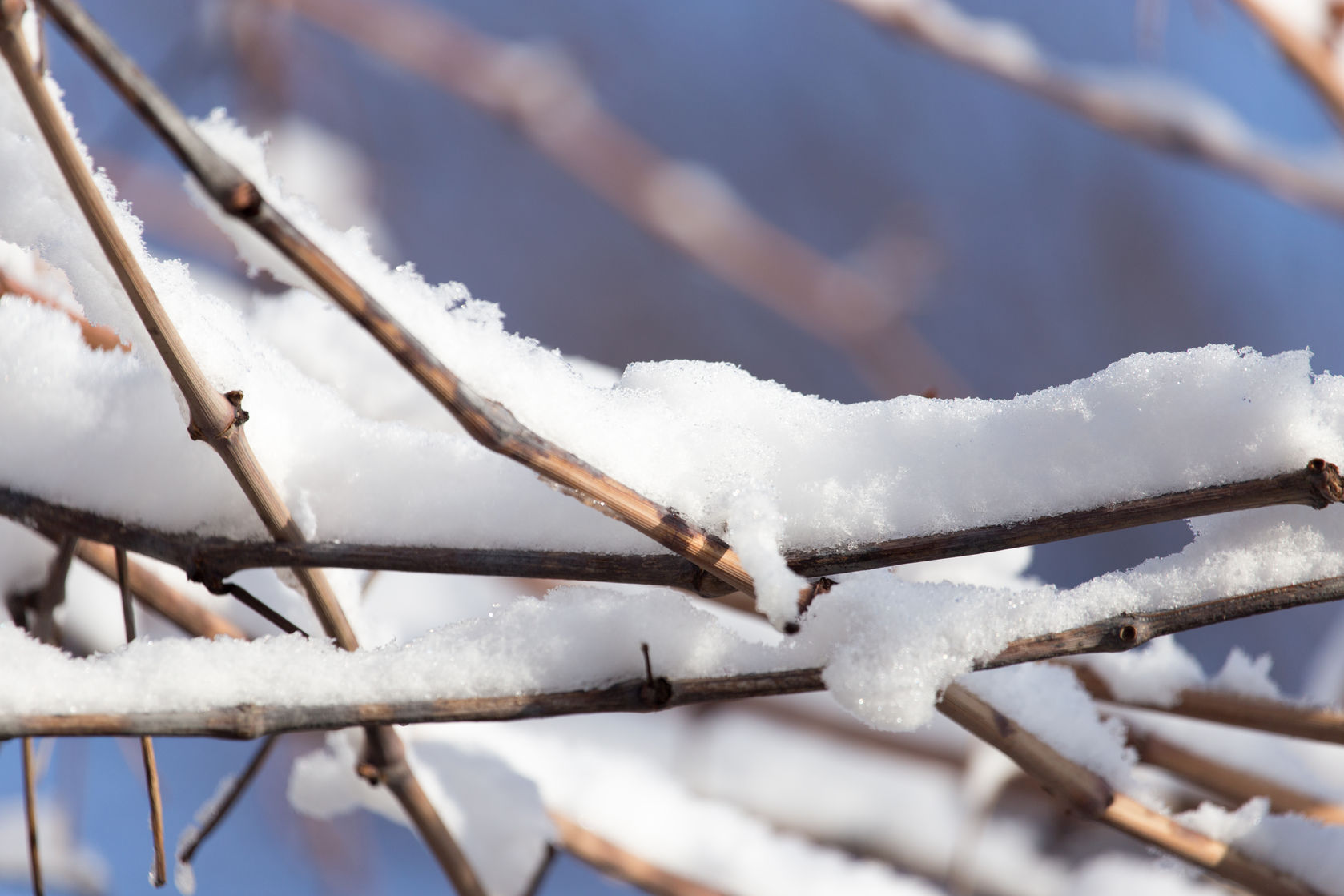
Houston Trees Susceptible to Ice Storm Breakage
If temperatures routinely dip below freezing in your area, you’ve likely witnessed the impact ice can have on your property. Ice-covered trees, in particular, are susceptible to breakage from the added weight. But how can you know which of your trees are more likely to give in?
“There are a number of growth features that increase a tree species’ susceptibility to breakage in ice storms,” says Tchukki Andersen, staff arborist with the Tree Care Industry Association (TCIA). “Among them are included bark, decaying or dead branches, increased surface area of lateral (side) branches, broad crowns or imbalanced crowns, and fine branch size.”
Included bark results from in-grown bark in branch junctions. This is a weak connection and increases the likelihood of branch breakage under ice-loading conditions.
Decaying or dead branches are already weakened and have a high probability of breaking when loaded with ice. The surface area of lateral branches increases as the number of branches and the broadness of the crown increase. With an increased surface area, more ice can accumulate on lateral branches; the greater ice load results in greater branch failure.
Many broad-leafed tree species, when grown in the open, form broad crowns (decurrent branching), increasing their susceptibility to ice storms. Examples include Siberian elm, American elm, hackberry, green ash, and honey locust. Trees with imbalanced crowns are also more susceptible to ice damage. In general, susceptibility can vary greatly depending on the time of year, geographic location and overall health of the tree.
When planting a new tree in your yard, you should have a clear understanding of the size that tree is expected to grow. Is it too close to the house? The overhead wires? The sidewalk? Proper tree placement, away from structures, will reduce property damage.
Trees should not be planted in locations where growth will interfere with above-ground utilities—branches that grow into power lines and fail during ice storms create power outages and safety hazards. Trees pruned regularly from a young age should be more resistant to ice storms as a result of removal of structurally weak branches, decreased surface area of lateral branches and decreased wind resistance. Professional arborists can install cables and braces to increase a tree’s tolerance to ice accumulation in situations where individual trees must be stabilized to prevent their failure.
After storm damage has occurred, hazardous trees and branches require immediate removal to ensure safety and prevent additional property damage. Trees that can be saved should have broken branches properly pruned to the branch collar. Loose bark should be cut back only to where it is solidly attached to the tree. A split fork can be repaired through cabling and bracing.
Tree species resistant to ice damage can be planted to reduce tree and property damage from ice storms. Common trees and their levels of susceptibility* include:
Resistant
• American sweetgum
• Arborvitae
• Black walnut
• Blue beech
• Catalpa
• Eastern hemlock
• Ginkgo
• Ironwood
• Kentucky coffee tree
• Littleleaf linden
• Norway maple
• Silver linden
• Swamp white oak
• White oak
Semi-Resistant
• Bur oak
• Eastern white pine
• Northern red oak
• Red maple
• Sugar maple
• Sycamore
• Tuliptree
• White ash
Susceptible
• American elm
• American linden
• Black cherry
• Black locust
• Bradford pear
• Common hackberry
• Green ash
• Honey locust
• Pin oak
• Siberian elm
• Silver maple
*Sources: University of New Hampshire; University of Illinois; United States Department of Agriculture Forest Service; New Hampshire Department of Resources and Economic Development
Source: TCIA
Connect with us: Facebook – Twitter – LinkedIn – YouTube – Pinterest – Google+ – HOUZZView Our Communities – View our available new home floor plans – View our photo gallery


Sorry, the comment form is closed at this time.